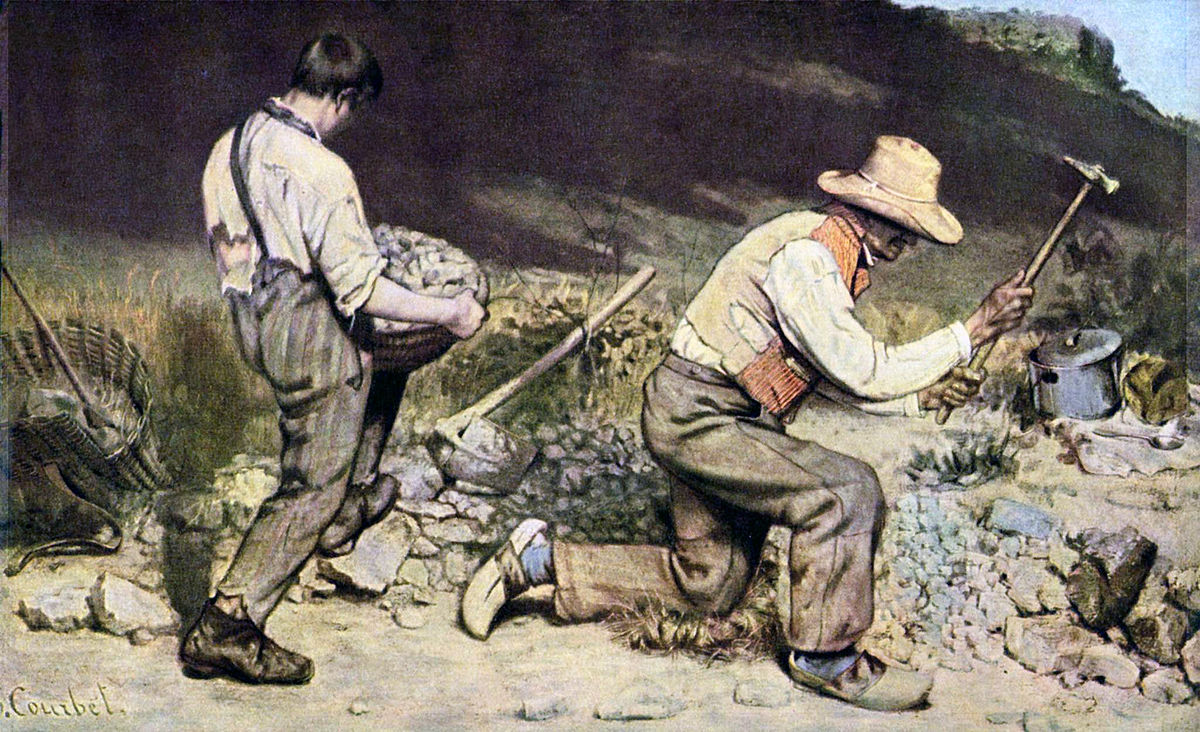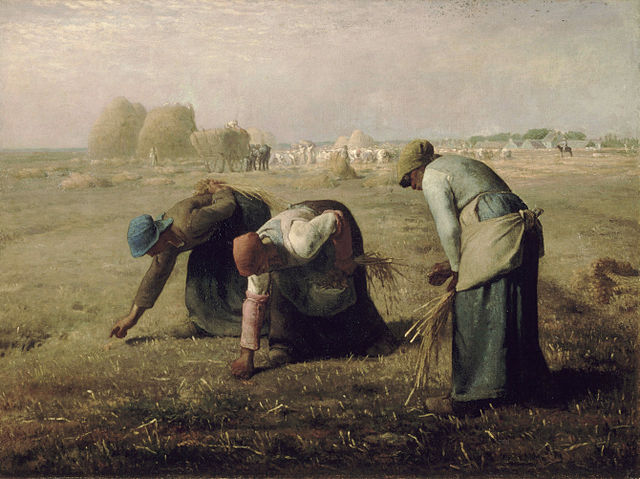11.34: Courbet, Los Rompepiedras
- Page ID
- 102984

Realismo y Realidad
Si observamos de cerca la pintura de Courbet Los rompedores de piedra de 1849 (pintada solo un año después de que Karl Marx y Friedrich Engels escribieran su influyente panfleto, El Manifiesto Comunista) la preocupación del artista por la difícil situación de los pobres es evidente. Aquí, dos figuras trabajan para romper y quitar piedra de una carretera que se está construyendo. En nuestra era de potentes martillos neumáticos y bulldozers, tal trabajo se reserva como castigo para las bandas de cadenas.
A diferencia de Millet (figura 2), quien era conocido por representar a gente rural idealizada, sana y abundante, Courbet representa figuras que visten ropa rasgada y andrajosa. Aquí no aparece ninguno de los campesinos mitologizados de Millet. Courbet quiere mostrar lo que es “real”, y así ha representado a un hombre que parece demasiado viejo y a un chico que todavía parece demasiado joven para labores tan desgarradoras.

Pero esto no pretende ser heroico: se pretende que sea un relato exacto del abuso y la privación que era un rasgo común de la vida rural francesa de mediados de siglo. Y como ocurre con tantas grandes obras de arte, existe una estrecha afiliación entre la narrativa (historia) y las elecciones formales hechas por el pintor, significando elementos como la pincelada, la composición, la línea y el color.
Los dos rompepiedras en la pintura de Courbet se sitúan contra una colina baja del tipo común en la ciudad rural francesa de Ornan, donde el artista había sido criado y continuó pasando gran parte de su tiempo. El cerro llega hasta la cima del lienzo por todas partes menos la esquina superior derecha, donde aparece una pequeña franja de cielo azul brillante. El efecto es aislar a estos trabajadores, y sugerir que están atrapados física y socioeconómicamente por su trabajo.
Al igual que las propias piedras, la pincelada de Courbet es áspero, más de lo que cabría esperar a mediados del siglo XIX. Esto sugiere que la forma en que el artista pintó su lienzo fue en parte un rechazo consciente del estilo neoclasicista altamente pulido y refinado que todavía dominaba el arte francés en 1848.
Quizás lo más característico del estilo de Courbet es su negativa a centrarse en las partes de la imagen que suelen recibir más atención. Tradicionalmente, un artista pasaba la mayor parte del tiempo en las manos, los rostros y los primeros planos. No Courbet. Si miras con atención, notarás que intenta ser imparente, atendiendo a rostros y rock por igual. Entonces, ¿qué es el Realismo de Courbet?
Colaboradores
- Los Rompepiedra. Proporcionado por: Khan Academy. Ubicado en: https://web.archive.org/web/20141007140843/http://smarthistory.khanacademy.org/the-stonebreakers.html. Licencia: CC BY-NC-SA: Atribución-NoComercial-CompartirIgual

